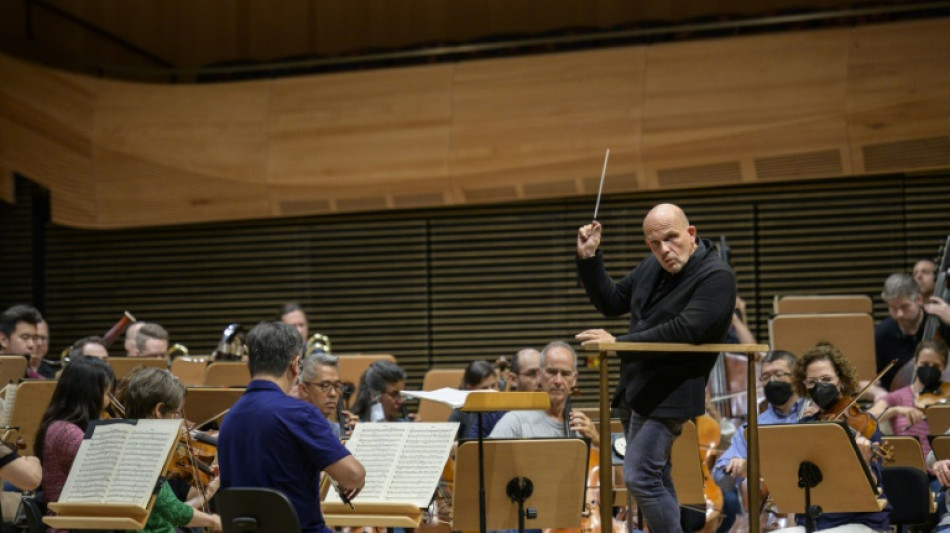
RBGPF
1.6500

The New York Philharmonic is tuning up to open their brand-new performance space next month -- and it's not only the instruments that need to strike the perfect pitch.
The hall itself is getting trial runs, with the famed symphony testing their pieces as acousticians make adjustments to wall and ceiling panels to ensure warm, rich tones.
It's "almost like you're going on a safari for sound," said Jaap van Zweden, the philharmonic's music director since 2018. "It's really to reinvent the sound of the orchestra."
The Dutch-born conductor explained to AFP that for years, the former hall's dated design did little to contribute to the acoustics created by the instruments.
But now, "they get a lot of sounds and beauty back, that's a little new for them... this honeymoon between them and the hall needs some time."
The $550 million overhaul of the space that first opened in 1962 accelerated after concerts shut down at David Geffen Hall in March 2020.
As halls across the country went dark, the philharmonic, in partnership with Lincoln Center -- the arts complex on Manhattan's Upper West Side -- finally forged ahead on reconstructing their home, talks of which dated back to 1995.
More than 600 construction workers put in hours at any given time, six days a week with multiple shifts and overtime, to revamp the building into a state-of-the-art space with improved acoustics and more accessible design.
The renovation reduces capacity from 2,738 to 2,200, but visibility is improved for nearly every seat in the house.
And some seating is now positioned behind the orchestra, whose stage is 24 feet (seven meters) forward from its previous spot against the wall, giving concerts a surround-sound feel.
The walls were carefully reconstructed and faced with beech wood, explained chief acoustician Paul Scarbrough, to support the room's bass frequencies.
Another new feature is an adjustable acoustic canopy: "We were able to fine-tune how much energy is returned to the musicians on the platform so they can hear themselves and play together, versus how much is directed out to the audience," Scarbrough said.
"So that they get a rich, enveloping experience of the orchestra."
- New 'energy' -
In collaboration with Van Zweden, a team from the firm Akustiks selected a variety of works "that would bring out different colors, textures, timbres, layering of instrumentation," Scarbrough said.
They then began making subtle adjustments to the room's features to perfect the sound's quality onstage and in the audience.
Violinist Yulia Ziskel called the experience and design "incredible," describing how the orchestra members get to discuss the sound before changes will be made to the room, and five minutes later "things would be vastly different, suddenly different sounding."
"This hall is so flexible to accommodate so many different options," said the musician, who has played with the Phil for 22 seasons.
The hall's tuning, which began in August, marks a homecoming for the philharmonic, which has been a nomadic symphony since March 2020.
The pandemic, and then the major renovation that turned their old venue into a skeleton of itself, meant that one of America's oldest musical institutions reopened its subscription season last fall in temporary homes in Lincoln Center's other spaces.
Ethan Bensdorf, a trumpet player about to start his 15th season with the company, said the return felt like "buying a new pair of jeans."
"You're really excited to wear the new jeans, they might feel a little stiff at first," he said. "But the more you get used to it, the more they sort of mold to your body."
The philharmonic's public opening is set for October 8, and will feature a performances of Etienne Charles' "San Juan Hill." The subscription season then opens October 12 with the world premiere of Brazilian conductor Marcos Balter's "Oya."
"I can't wait to see what the audience will see," said musician Bensdorf. "That's why we perform, that's why we're musicians, that's what we get from live music, that's why live music is so magical."
"I'm really looking forward to that energy in the hall."
G.Kuhn--NZN